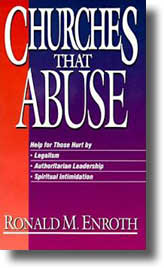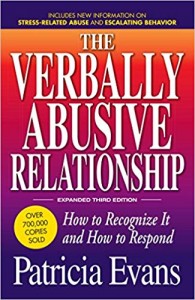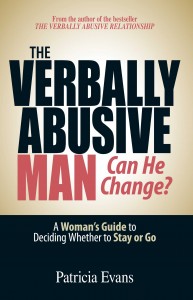What characterizes abusive churches is their cultic method of ministry. Although outwardly orthodox in their theology, these churches use abusive and mind control methods to get their followers to submit to the organization. In this article Dr. Pat Zukeran covers eight characteristics of abusive churches.
![]() This article is also available in Spanish.
This article is also available in Spanish.
 We are all familiar with traditional cults such as the Mormons and the Jehovah’s Witnesses. There are, however, other groups with cultic characteristics that do not fit the same profile as the traditional cults. Sometimes called “abusive churches” or even “Bible-based cults,” they appear outwardly orthodox in their doctrinal beliefs. What distinguishes these groups or churches from genuine orthodox Christianity is their abusive, cultic-like methodology and philosophy of ministry.
We are all familiar with traditional cults such as the Mormons and the Jehovah’s Witnesses. There are, however, other groups with cultic characteristics that do not fit the same profile as the traditional cults. Sometimes called “abusive churches” or even “Bible-based cults,” they appear outwardly orthodox in their doctrinal beliefs. What distinguishes these groups or churches from genuine orthodox Christianity is their abusive, cultic-like methodology and philosophy of ministry.
 In his book Churches That Abuse, Dr. Ronald Enroth carefully examines several of these churches throughout the United States. He reveals the cultic methods these groups use and points out several distinguishing marks of abusive churches. At this point I will briefly introduce each of these characteristics and some of my own. Later, I’ll discuss all these characteristics in detail.
In his book Churches That Abuse, Dr. Ronald Enroth carefully examines several of these churches throughout the United States. He reveals the cultic methods these groups use and points out several distinguishing marks of abusive churches. At this point I will briefly introduce each of these characteristics and some of my own. Later, I’ll discuss all these characteristics in detail.
First, abusive churches have a control-oriented style of leadership. Second, the leaders of such churches often use manipulation to gain complete submission from their members. Third, there is a rigid, legalistic lifestyle involving numerous requirements and minute details for daily life. Fourth, these churches tend to change their names often, especially once they are exposed by the media. Fifth, denouncing other churches is common because they see themselves as superior to all other churches. Sixth, these churches have a persecution complex and view themselves as being persecuted by the world, the media, and other Christian churches. Seventh, abusive churches specifically target young adults between eighteen and twenty-five years of age. The eighth and final mark of abusive churches is the great difficulty members have in getting out of or leaving these churches, a process often marked by social, psychological, or emotional pain.
Those involved in a church that seems to reflect these characteristics would be wise to evaluate the situation thoroughly and leave the church if it is appropriate. Staying may increase the risks of damaging your family relationships and multiplies the likelihood of losing your perspective. Members of such churches often develop a distorted view of reality, distrust everyone, and suffer from stress, fear, and depression. Some former members even continue to experience these things after escaping from an abusing church. There are also several documented cases in which associating with an abusive church has led to the deaths of individuals or their relatives.
Some of these groups have networks of many sister churches. In some cases these groups have split off from more mainstream denominations. Occasionally the new groups have even been denounced by the founding denomination. Such groups often disguise themselves by frequently changing the name of their organization, especially following adverse publicity. This practice makes the true nature of these organizations more difficult to determine for the unsuspecting individual. Some abusive churches have college ministries all across the country. On some university campuses such student movements are among the largest groups on their respective campuses.
It is important that Christians today know the Bible and know how to recognize such churches so as not to fall into their traps. In order to help people become more aware of churches which may be abusing their members, I now want to go through in more detail the eight characteristics I mentioned earlier.
Control-Oriented Leadership
A central feature of an abusive church is control-oriented leadership. The leader in an abusive church is dogmatic, self- confident, arrogant, and the spiritual focal point in the lives of his followers. The leader assumes he is more spiritually in tune with God than anyone else. He claims insight into Scripture that no one else has. Or, he may state that he receives personal revelations from God. Because of such claims, the leader’s position and beliefs cannot be questioned; his statements are final. To members of this type of church or group, questioning the leader is the equivalent of questioning God. Although the leader may not come out and state this fact, this attitude is clearly seen by the treatment of those who dare to question or challenge the leader. The leader of the movement often makes personal decisions for his followers. Individual thinking is prohibited; thus the followers become dependent on the leader.
In the hierarchy of such a church, the leader is, or tends to be, accountable to no one. Even if there is an elder board, it is usually made up of men who are loyal to, and will never disagree with, the leader. This style of leadership is not one endorsed in the Bible. According to Scripture all believers have equal access to God and are equal before Him because we are made in His image, and we are all under the authority of the Word of God. In 1 Thessalonians 5:21 believers are directed to measure all teachings against the Word of God. Acts 17:11 states that even the apostle Paul was under the authority of the Bible, and the Bereans were commended because they tested Paul’s teachings with the Scriptures. Leaders and laity alike are to live according to Scripture.
Manipulation of Members
Abusive churches are characterized by the manipulation of their members. Manipulation is the use of external forces to get others to do what someone else wants them to do. Here manipulation is used to get people to submit to the leadership of the church. The tactics of manipulation include the use of guilt, peer pressure, intimidation, and threats of divine judgment from God for disobedience. Often harsh discipline is carried out publicly to promote ridicule and humiliation.
Another tactic is the “shepherding” philosophy. As practiced in many abusive churches this philosophy requires every member to be personally accountable to another more experienced person. To this person, one must reveal all personal thoughts, feelings, and discuss future decisions. This personal information, is not used to help the member, but to control the member.
Another means of control is isolation. Abusive churches may cut off contact between a new member and his family, friends, and anyone else not associated with the church.
How different this style of leadership is from the leadership of Jesus, the Good Shepherd who lovingly, gently, humbly, and sacrificially leads His sheep.
Rigid, Legalistic Lifestyle
The third characteristic of abusive churches is the rigid, legalistic lifestyle of their members. This rigidity is a natural result of the leadership style. Abusive churches require unwavering devotion to the church from their followers. Allegiance to the church has priority over allegiance to God, family, or anything else.
Often members are required or pressured to attend Bible studies five, six, or seven days a week. There is a requirement to do evangelism; a certain quota of contacts must be met, and some churches even require members to fill out time cards recording how many hours they spent in evangelism, etc. Daily schedules are made for the person; thus he is endlessly doing the church’s ministry. Former members of one church told me they were working for their church from 5:00 am to 12:00 midnight five days a week.
Members of such churches frequently drop out of school, quit working, or even neglect their families to do the work required by the church. There are also guidelines for dress, dating, finances, and so on. Such details are held to be of major importance in these churches.
In churches like these, people begin to lose their personal identity and start acting like programmed robots. Many times, the pressure and demands of the church will cause a member to have a nervous breakdown or fall into severe depression. As I reflect on these characteristics I think of Jesus’ words concerning the Pharisees who “tie up heavy loads and put them on men’s shoulders, but they themselves are not willing to lift a finger” (Matt. 23: 4). What a contrast from the leadership style of Jesus who said, “Come to me, all you who are weary and burdened, and I will give you rest. Take my yoke upon you. . . .For my yoke is easy and my burden is light” (Matt. 11:28-30).
Frequent Changing of Group/Church Name
A fourth characteristic of abusive churches is a pattern of constantly changing the name of the church or campus ministry. Often a name change is a response to unfavorable publicity by the media. Some abusive churches have changed their name several times in the course of a few years.
If you are in such a church, one that has changed its name several times because of bad publicity, or if you feel unceasing pressure to live up to its demands, it is probably time to carefully evaluate the ministry of the church and your participation in it.
Denouncing All Other Churches
Let us now take a look at the fifth characteristic: abusive churches usually denounce all other Christian churches. They see themselves as spiritually elite. They feel that they alone have the truth and all other churches are corrupt. Therefore, they do not associate with other Christian churches. They often refer to themselves as some special group such as, “God’s Green Berets,” “The faithful remnant,” or “God’s end-time army.” There is a sense of pride in abusive churches because members feel they have a special relationship with God and His movement in the world. In his book Churches That Abuse, Dr. Ron Enroth quotes a former member of one such group who states, “Although we didn’t come right out and say it, in our innermost hearts we really felt that there was no place in the world like our assembly. We thought the rest of Christianity was out to lunch.” However the Bible makes it clear, that there are no spiritually elite groups or churches. Ephesians 4:36 states, “Make every effort to keep the unity of the Spirit through the bond of peace. There is one body and one Spirit, just as you were called to one hope, when you were called, one Lord, one faith, one baptism; One God and Father of all.”
The Christian church universal is united by the same God, the same Holy Spirit, and the fundamental beliefs of the Bible which include such things as the Trinity, authority of the Bible, the death and resurrection of Jesus, the deity of Christ, justification by faith alone, and so on. In these central truths we stand united. A church which believes itself to be elite and does not associate with other Christian churches is not motivated by the spirit of God but by divisive pride.
Persecution Complex
The sixth characteristic follows naturally. Because abusive churches see themselves as elite, they expect persecution in the world and even feed on it. Criticism and exposure by the media are seen as proof that they are the true church being persecuted by Satan. However, the persecution received by abusive churches is different from the persecution received by Jesus and the Apostles.
Jesus and the Apostles were persecuted for preaching the truth. Abusive churches bring on much of their negative press because of their own actions. Yet, any criticism received, no matter what the source–whether Christian or secular–is always viewed as an attack from Satan, even if the criticisms are based on the Bible. This makes it difficult to witness to a person in such a church for he will see your attempt to share the gospel with him as persecution. Often in cases like these, when I am accused of persecuting, I simply reply, “I am here talking to you with the Word of God which you say you believe. How can this be persecution?” This approach often helps in continuing the dialogue with a member of an abusive church who has been brainwashed to believe that all opposition is persecution.
Targeting Young Adults
The seventh characteristic of abusive churches is that they tend to target young adults ages 18-25 who are in the middle class, well educated, idealistic, and often immature Christians. Young adults are the perfect age group to focus on because they are often looking for a cause to give their lives to, and they need love, affirmation, and acceptance. Often these churches will provide this, and the leaders frequently take the role of surrogate parents.
Painful Exit Process
The eighth characteristic is a painful and difficult exit process. Members in many such churches are afraid to leave because of intimidation, pressure, and threats of divine judgment. Sometimes members who exit are harassed and pursued by church leaders. The majority of the time, former members are publicly ridiculed and humiliated before the church, and members are told not to associate in any way with any former members. This practice is called shunning.
Many who leave abusive churches because of the intimidation and brainwashing, actually feel they have left God Himself. None of their former associates will fellowship with them, and they feel isolated, abused, and fearful of the world. One former member of a particular campus ministry said, “If you leave without the leadership’s approval, condemnation and guilt are heaped upon you. My pastor told me he thought it was satanic for me to leave and wondered if I could continue my salvation experience.”
Let me conclude this discussion by sharing some practical ways of reaching those who are involved in abusive churches. First, we must begin with prayer. Witnessing to those brainwashed in abusive churches is often intimidating and difficult. Often leaders will not allow an individual member to meet with an outsider unless accompanied by an older, more experienced person who is trained in debating and/or intimidation. Therefore, we must pray (1) for a chance to speak with the individual{1} and that he would be open to what we have to share.{2}
Second, lovingly confront the person and surface some biblical issues. Often, abusive churches have a bizarre teaching or a theological error that can be pointed out. In his book Churches That Abuse, Dr. Ron Enroth documents several examples of this. For instance, the leader of one church had strange teachings based on his claims of extra-biblical revelations from God.{3} These included dietary laws, sexual behavior, home decorations, and others. The leader of another group called doctors “medical deities.” He also claimed medicines had demonic names and if taken, opened a person up to demonic influence.{4} Pointing out errors, inconsistencies, and bizarre beliefs may open the individual’s mind and prompt him to begin asking questions.
Third, share articles you may find in the newspaper or in magazines on the particular church under discussion. The book that I have often quoted from, Churches That Abuse, is an excellent resource. The key is to get the individual to start asking questions and research answers for himself. Tell him to test everything with the Scriptures and not to be afraid to ask questions. If the leader is afraid or hesitant to answer a member’s honest questions, the maturity of that leadership may be suspect.
Jesus, however, said that truth is a means of freedom, not bondage. He said, “You shall know the truth, and the truth shall make you free” (John 8:32).
Notes
1. Ronald Enroth, Churches That Abuse (Grand Rapids, Mich.: Zondervan, 1992), p. 118.
2. Ibid., p. 181.
3. Ibid., p. 128.
4. Ibid., p. 170.
©1993 Probe Ministries.

